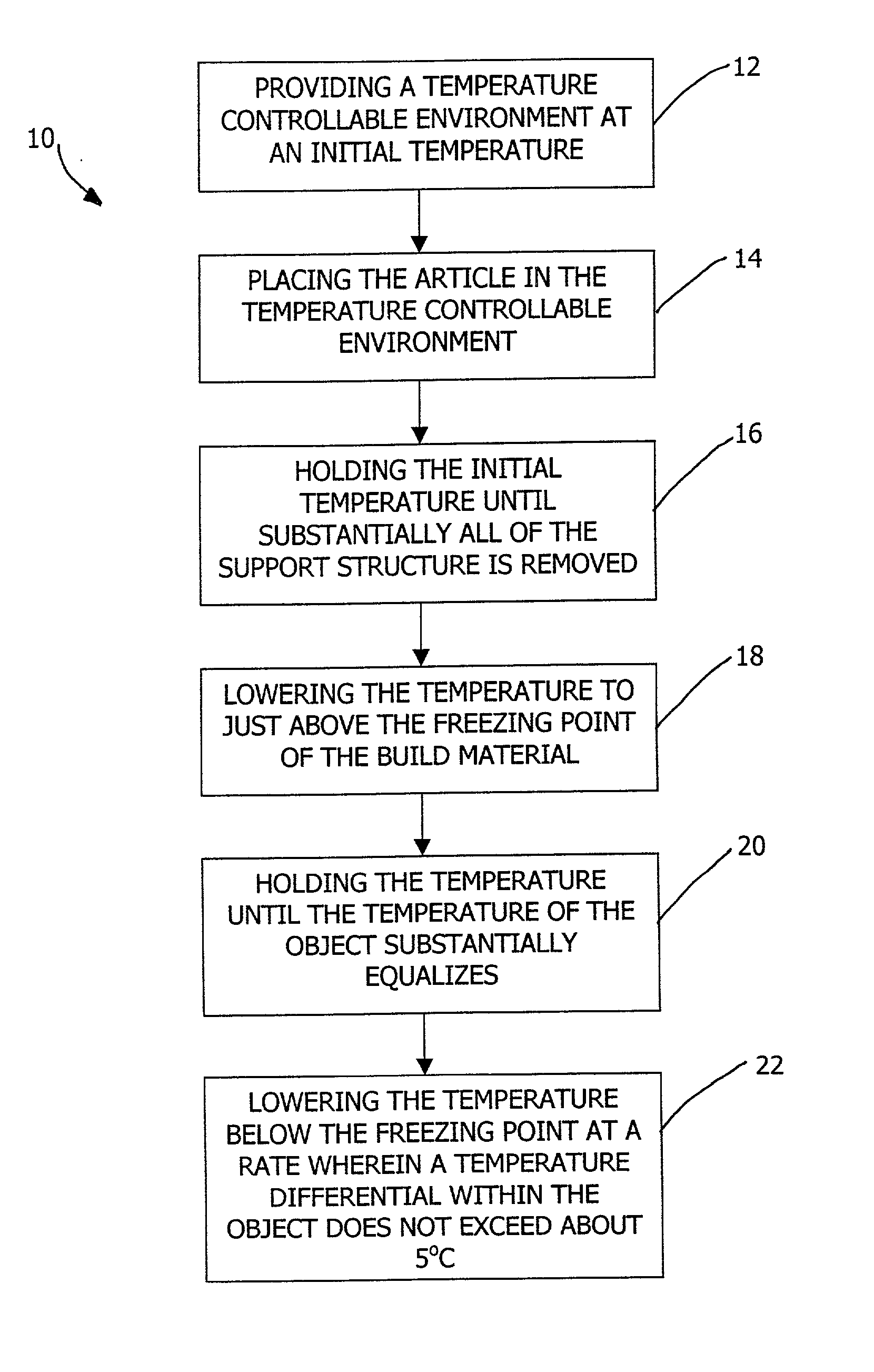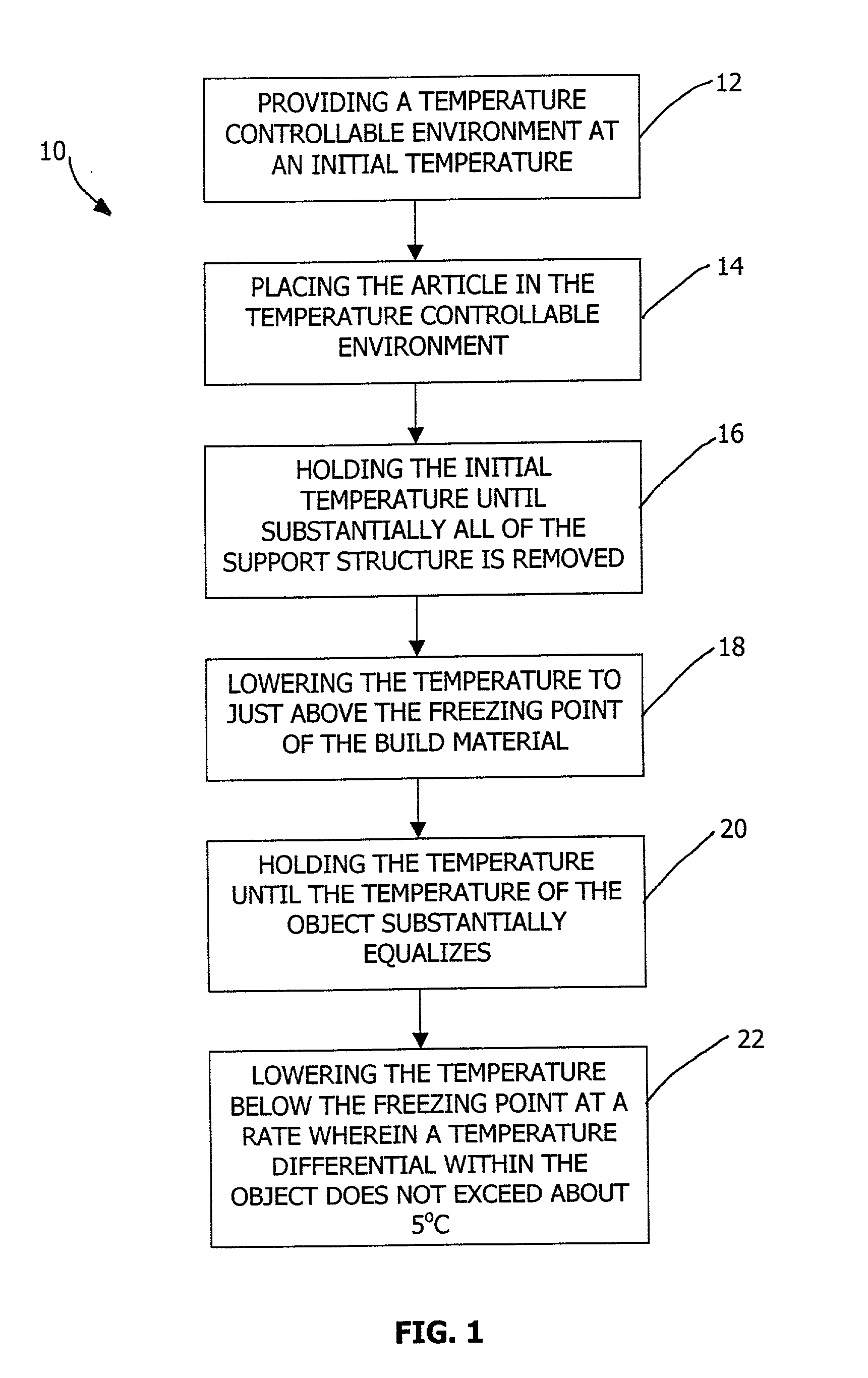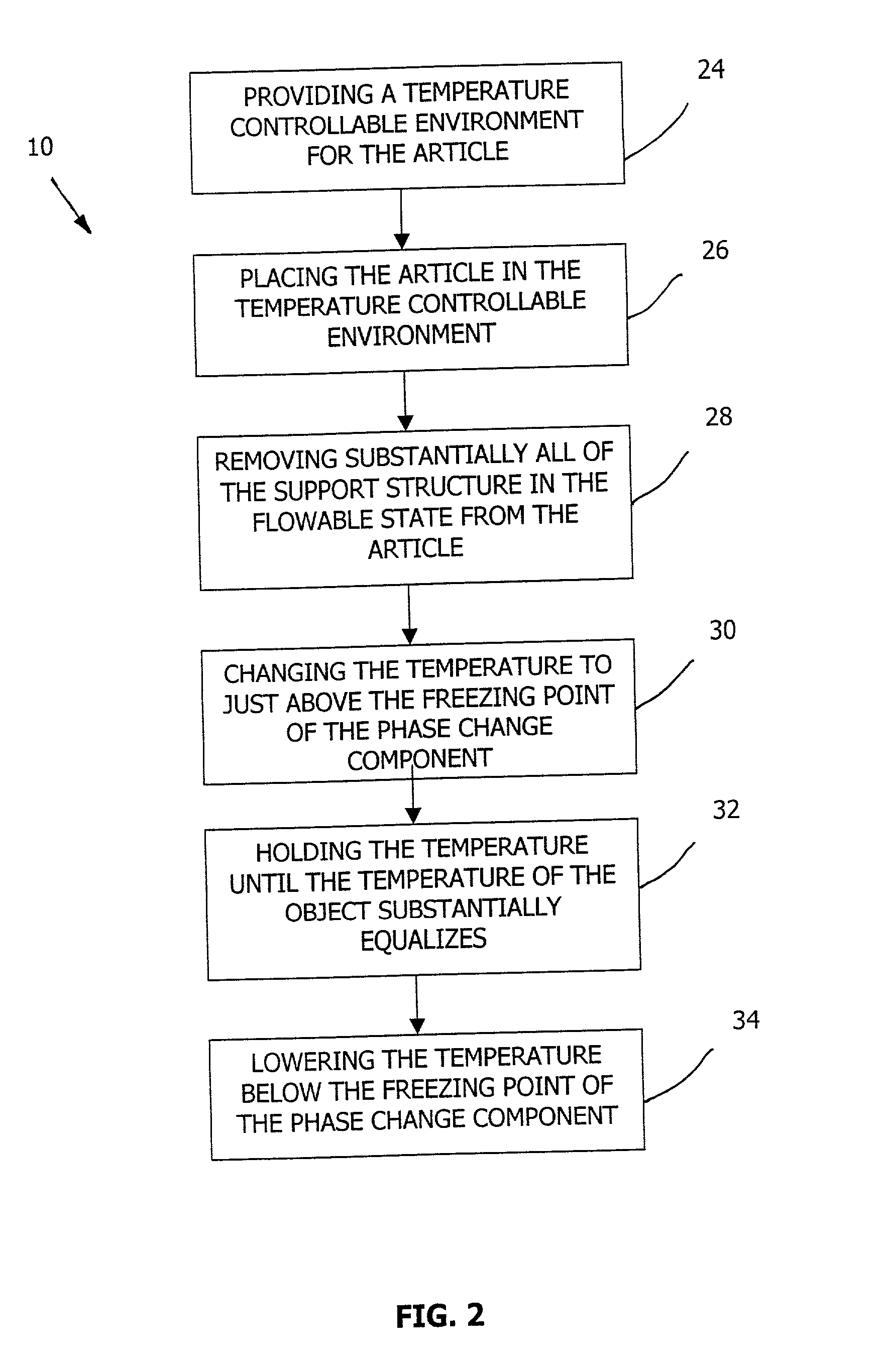Post processing three-dimensional objects formed by solid freeform fabrication
a freeform fabrication and three-dimensional technology, applied in the field of solid deposition modeling, can solve the problems of shortening the time to develop prototype parts, adverse effects, and limited production of parts in rapid manufacturing processes
- Summary
- Abstract
- Description
- Claims
- Application Information
AI Technical Summary
Problems solved by technology
Method used
Image
Examples
first embodiment
[0062] Referring to FIG. 1, the post processing procedure of the present invention is generally identified by numeral 10. The post processing procedure involves providing a temperature controllable environment for the article at an initial temperature 12, followed by placing the article in the temperature controllable environment 14. The initial temperature is above the melting temperature of the support material so as to cause it to transition to a flowable state. The next step identified by numeral 16 involves holding the temperature of the controllable environment above the melting point of the phase change support structure until substantially all of the support material of the article is removed from the three-dimensional object. The next step identified by numeral 18 involves lowering the temperature of the three-dimensional object to a temperature just above the freezing point of the build material composition. The temperature just above the freezing point should be no more t...
second embodiment
[0068] Referring to FIG. 2, the post processing procedure of the present invention is generally identified by numeral 10. The post processing procedure 10 involves providing a temperature controllable environment for the article as identified by numeral 24. In this step the temperature controllable environment may be an oven operated under atmospheric conditions and may be preheated prior to placing the article in the temperature controllable environment, as identified by numeral 26. The article then remains in the temperature controllable environment for a sufficient time so that substantially all of the support structure transitions to a flowable state and is removed from the article, as identified by numeral 28. As discussed previously, there are numerous alternatives to removing substantially all of the support material, such as by placing the article in a liquid heat transferring medium at an elevated temperature.
[0069] Once substantially all of the support material has been re...
fourth embodiment
[0077] Referring to FIG. 4, the post processing procedure is shown by numeral 10 which utilizes a fatty acid ester fluid medium for removing the residual support material. As with the other embodiments, the post processing procedure 10 initially involves providing a temperature controllable environment for the article, as identified by numeral 24. Initially, the temperature controllable environment is an oven that is pre-heated to a temperature above the melting point of the support material. As identified by numeral 26, the object and its support are placed in the temperature controllable environment to provide an initial bulk melt of the support material. Once substantially all of the support structure is removed by the initial bulk melt as identified by numeral 28, the article is then submersed in a fluid of fatty acid ester as identified by numeral 40. The fluid of fatty acid ester may be a soy-based product such as the Soygold.RTM. or Soyclear.RTM. products as discussed above, ...
PUM
| Property | Measurement | Unit |
|---|---|---|
| Angle | aaaaa | aaaaa |
| Angle | aaaaa | aaaaa |
| Angle | aaaaa | aaaaa |
Abstract
Description
Claims
Application Information
 Login to View More
Login to View More - R&D
- Intellectual Property
- Life Sciences
- Materials
- Tech Scout
- Unparalleled Data Quality
- Higher Quality Content
- 60% Fewer Hallucinations
Browse by: Latest US Patents, China's latest patents, Technical Efficacy Thesaurus, Application Domain, Technology Topic, Popular Technical Reports.
© 2025 PatSnap. All rights reserved.Legal|Privacy policy|Modern Slavery Act Transparency Statement|Sitemap|About US| Contact US: help@patsnap.com



